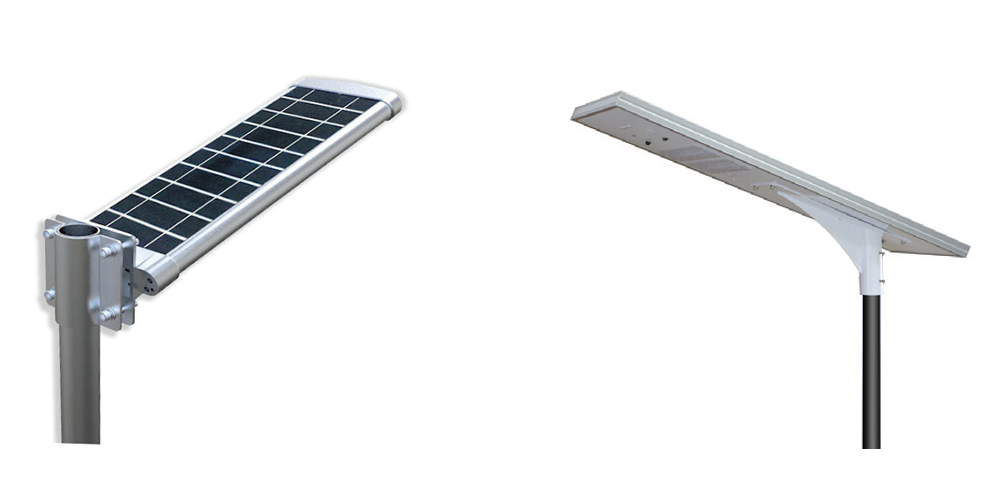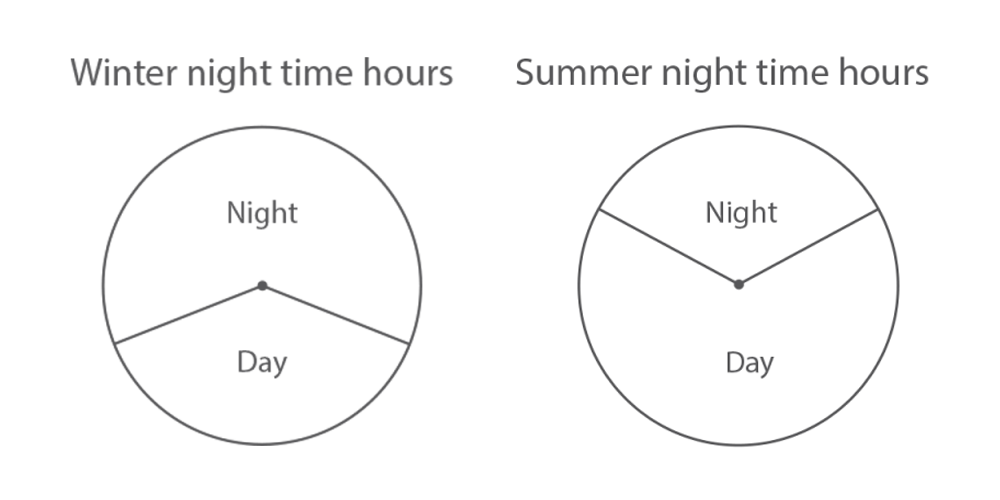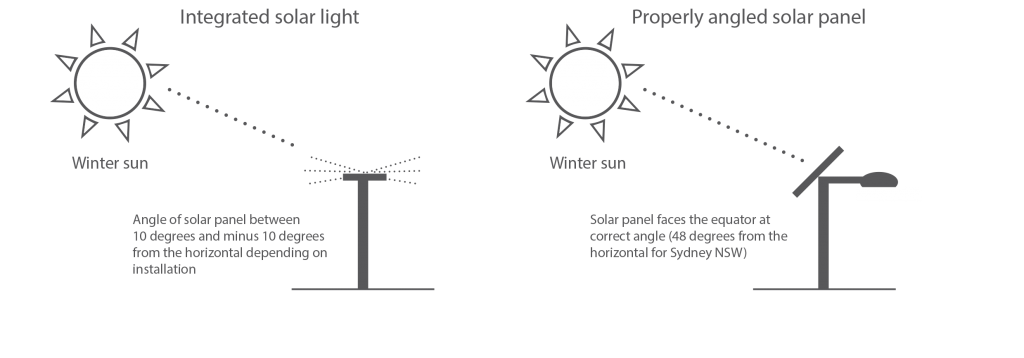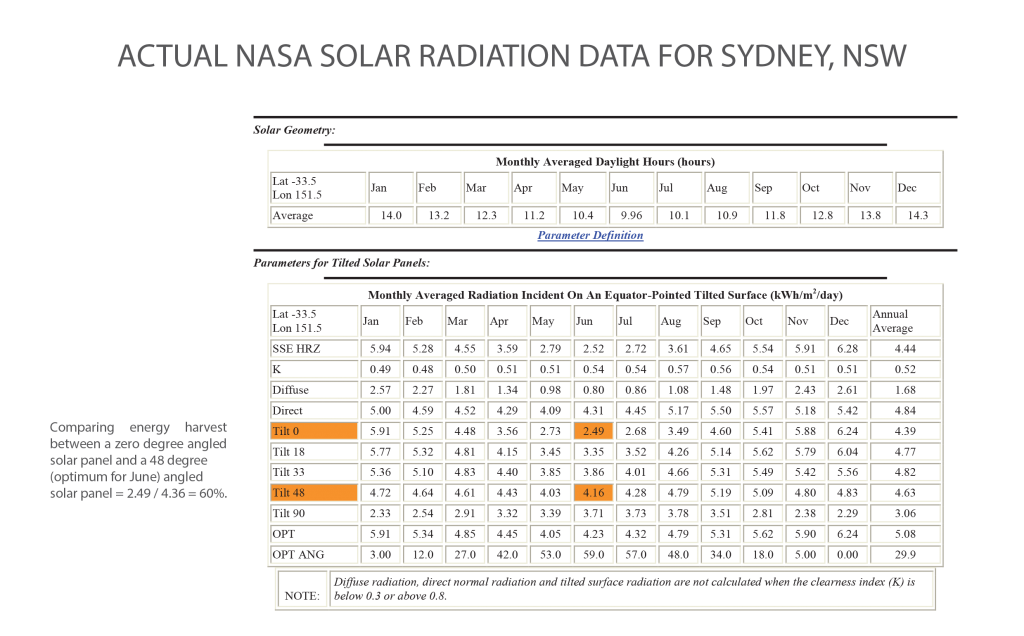
Integrated Solar Lights: Understand Their Limitations
Integrated style solar lights have severe limitations
The use of integrated style solar lights has exploded in the last 5 or 6 years. Integrated (often referred to as ‘all in one’) solar lights have the solar panel as the roof of the housing, the batteries inside, and the LEDs attached to the underside of the casing. This makes a very cost effective construction, and in some situations are fit for purpose.
They definitely have their place in equatorial latitudes where the sun does not stray too far from directly above, or even further from the equator when you have the luxury of installing them with the solar panel facing exactly towards the equator.

However they also have some large limitations and are extremely unsuitable for many solar lighting applications.
For applications further away from the equator (which includes most of Australia), the very flat solar panel angle on integrated solar lights generally will not harvest nearly enough UV in winter (when the sun is tracking very low to the North) to recharge the battery.
Unfortunately this is exactly when the battery needs it the most as the winter nights are much longer, (coinciding with the shortest daytime sun hours as well). In some parts of Australia the longest winter nights can be up to 15 hours long.
The other major limitation with integrated solar lights is the solar panel orientation is determined by the direction of the LEDs which may cause the solar panel to not be facing the equator. This may work for a light in the middle of a park where there is no shade and the pole can be positioned to orientate the solar panel towards the equator, however it will not work for a winding pathway where the solar panels are facing in all directions.
The winter sun angle on a close to zero degree angled solar panel reduces the power harvesting severely (60% of what a correctly angled 48 degree from the horizontal north facing solar panel should). Our experience has been that almost every integrated solar light has an undersized solar engine (panel and battery) for the lighting profile (wattage/load on the battery).
A general rule of thumb is that for many parts of Australia, a minimum of four nights* battery back-up is required (allowing for the longest winter nights which are up to 15 hours long in some parts of Australia).
* Monsoonal (Tropical) areas generally require 5+ nights battery back-up due to heavy cloud cover referred to as Black or Dark days. Snow field areas also require the 5+ nights battery back-up for much the same reason.
The battery back-up requirement can be compensated for by running the light at a very low setting. Our experience is that most integrated solar lights do not make this compensation.
For example a 60w solar panel angled at 48 degrees and facing the equator combined with a 30AH 12v battery operating at a constant state all night would have to be no more than approximately 5.6w for a reliable all night light and still provide the necessary 4 + nights battery back-up allowing for the longest winter nights. A modern LED module operating at 5.6w will produce approximately 700 delivered lumens. Therefore a zero degree (flat) solar panel would need to be approximately 100w to achieve the same result.


In summary.
Integrated lights are more suited to regions close to the equator where the sun remains relatively overhead, where-as the nature of the very flat solar panel angle makes it unsuitable for latitudes away from the equator where the winter sun is tracking low.
This can be compensated for by running the light at a very low setting. Our experience is that most integrated solar lights do not make this compensation. The result of this is product failure and the battery requiring replacement more regularly.
